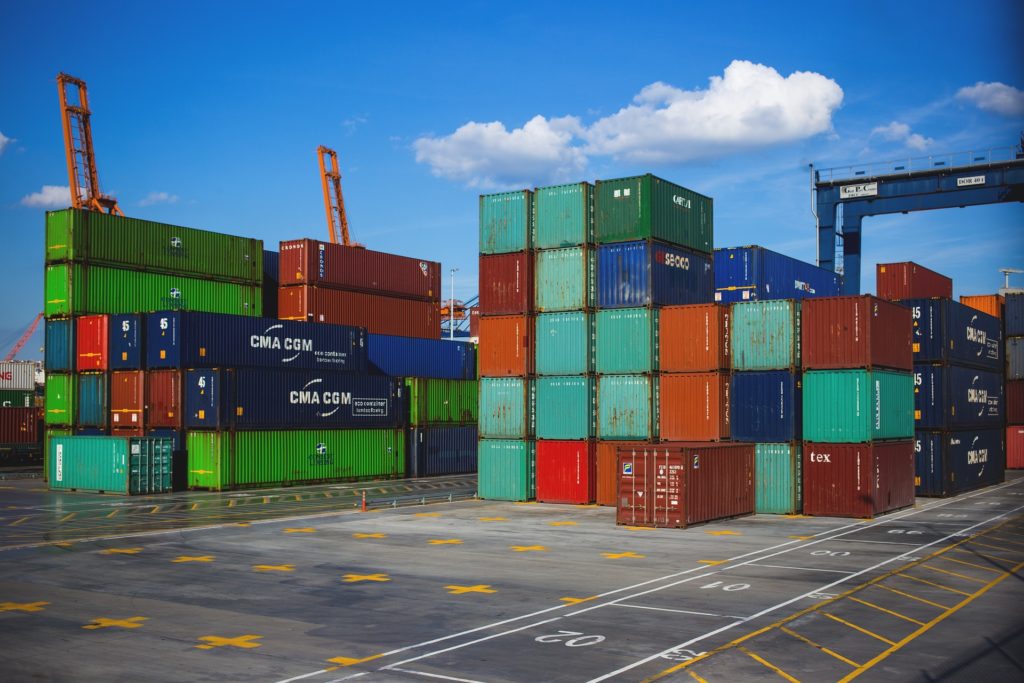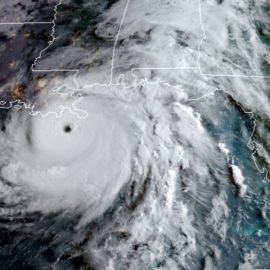
32 ports and all supervised by separate control bodies with not that much coordination.
Louisiana has 32 ports, all with their own separate boards, desires and priorities. That parochial system, with no guiding statewide strategy or oversight, has bred infighting and hurt the state’s competitiveness, port and economic development leaders say. It has led the Port of Plaquemines, Port of New Orleans and St. Bernard Parish to squabble over who should build a prized new container terminal. It allowed the Port of South Louisiana to reach into the Port of New Orleans’ jurisdiction to pull off a controversial purchase of the old Avondale shipyard, without the knowledge of the governor or anyone at the city’s port. Some officials say the balkanized setup has made it harder for any of south Louisiana’s ports to land government funds, with the feds and even state government unsure of the broader vision. Now, officials are hoping to pull off what has long eluded policy-makers: a consolidation of the oversight of Louisiana’s ports. If they succeed, some economic development leaders say, Louisiana’s ports could start becoming more competitive with peers around the country — and also land more of the unprecedented amount of infrastructure money coming from Washington, D.C.
nola.com
Are we alone? No but to better succeed we need state-wide coordination.
Louisiana is hardly the only state that has a crazy quilt of ports. But Jeffrey Monroe, director of education and standards at the International Association of Maritime and Port Executives, said the states that have been gaining market share in the world of ports typically have state overseers devising a unified strategy. Some, like Massachusetts, set up a port council to end competition between ports, he said. Louisiana’s system, he added, is least effective. “One of the greatest disadvantages of the U.S. when we compete with other countries is a lack of cohesive port policy,” he said. “We have not had a comprehensive transportation plan that involves ports since (President) Harry Truman. It’s always been parochial.” “The state needs to be there with a check in its hand and say nobody is getting anything until they work together.”
The fear is that we will be passed by with this disjointed system.
Louisiana has five deep-draft ports — which can accommodate big ships — along the Mississippi River, which connects to much of America’s interior. Those are the ports of Baton Rouge, South Louisiana, New Orleans, St. Bernard and Plaquemines. While the Port of South Louisiana is the nation’s leader in total tonnage, that’s partly because it moves an extraordinary amount of cheap bulk cargo like soybeans. The Port of New Orleans is the main player on the lower river, handling the majority of the more valuable cargo on containers. It counts $1 billion in assets, dwarfing the other ports. Most ports in Louisiana are extensions of local governments, acting as economic development agencies focused on the community’s big industries. But some port officials and economic development experts say the system has hampered the bigger ports’ ability to compete nationally. Ports in other states are seizing the moment. A presentation by GNO Inc. notes that the port in Mobile, Alabama surpassed the Port of New Orleans in container traffic in 2021. “The Port of Mobile has been operating with a singular focus, and is passing us by,” the presentation says. “We need to train our sights on the competition,” it said. “Not each other.”
We should be in a good position being on the Mississippi and at the mouth of the river leading into the Gulf but our share is dropping. Three separate ports here does mean competition among ourselves.
Though New Orleans’ founding owes to its strategic location near the mouth of the Mississippi, that hasn’t guaranteed its port dominance. In the 1980s, the Port of New Orleans lost ground to the booming oil economy of Houston, as well as to New York and Miami, and economic development leaders warned of complacency. A Times-Picayune editorial following a year-long investigation by the paper in 1982 said the port had failed to “adapt sufficiently to a shipping revolution spawned by new technologies and practices and fierce competition.” That competition has hardly waned since. The Port of New York and New Jersey — a century-old consolidated authority removed from some of the political pressures faced by Louisiana ports — is third in the nation in container traffic. Michael Hecht, head of GNO Inc., said that without the local population to sustain massive shipments like Houston and New York, New Orleans must compete for business that will serve the “middle third” of the country. He said Mobile is winning that battle right now. “Only Mobile or New Orleans will do that over time,” he said. “They can’t both do that. If you look at the beginning you’d say it’s a slam dunk for New Orleans because (it) has not only the Mississippi River but also six Class 1 railroads and a good airport. Because of the decades of focus and investment by Alabama … They not only have surpassed us in volume, but in facilities that have been built around the port.”
Aligned state strategy is what we are missing.
Brandy Christian, head of the Port of New Orleans, said Mobile’s success is the result of a “very aligned state strategy” that drew a big Walmart distribution center and car manufacturing to that area. She noted that Louisiana has had multiple “stop-and-start” projects planned for a container terminal on the lower Mississippi River for years. “When you have competing projects but not a state message, (shippers) ask, ‘Is this the project du jour for bigger vessels?’” While Christian said there’s no “one-size-fits-all” solution, given the dramatic differences in Louisiana’s many ports, private investors contemplating projects near ports want certainty and a cohesive strategy. In 2009, then-House Speaker Jim Tucker tried to streamline the governance of the ports on the lower Mississippi. The idea, he said, was to better compete with other states and countries ahead of the coming expansion of the Panama Canal. Instead, Louisiana’s various ports each flexed their political muscle in the Senate to get his bill killed, Tucker recalled recently. At the end of Gov. Bobby Jindal’s tenure, the Legislature agreed to set up a state board — the Board of International Commerce — that would oversee the various ports, create a master plan and, hopefully, guide a statewide strategy.
Parochialism is not helping us.
That board could have been useful in reviewing the Port of South Louisiana’s controversial, massive Avondale deal. But the BIC hasn’t even met in over two years. Louisiana Economic Development, the state agency that houses the board, said the governor’s Office of Boards and Commissions decided in early 2022 that there was a conflict in state law, resulting in the terms ending for 11 of the 20 board members. That caused a loss of quorum until new board members were chosen, which only happened recently. Greg Rusovich, a shipping executive who chairs the board, said some lawmakers will push to give the board more “teeth” in the upcoming session. He said his first priority will be to “get that damn master plan done.” The last master plan for Louisiana’s ports was conducted in 2013. Rusovich said Louisiana’s system confuses clients all over the world. He recalled traveling to Tokyo to promote the Port of New Orleans about five years ago and handing a business card to a Japanese freight carrier, who said he had already heard about the Port of Plaquemines container terminal. Rusovich said he had to explain that the ports are much different. “It sends a disorganized message to the world, both in the global market and to clients,” he said.
It is not that we do not have models to follow!
“It sends a disorganized message to the world, both in the global market and to clients,” he said. Rusovich said it’s also worth “aspiring” to the models set out by states like Virginia, New Jersey and New York. But he noted that past consolidation efforts here have proven difficult. “I feel like it’s deja vu again,” he said. “In 2011 and 2012, there was going to be a port consolidation bill. Everyone put all their chips on the table for the port consolidation bill. It lost.” Rep. Mark Wright, R-Covington, who chairs the House Transportation Committee, said he’ll bring a bill this year to take a “step toward unifying” the ports, though it won’t be a full consolidation. He said the lower Mississippi should be seen as one port ecosystem. While oil and gas used to be Louisiana’s bread and butter, Wright said the shipping industry is “really our horse.” “My theory is that if Louisiana wants to really become a state that’s growing…we’ve got to harness the ports more. I don’t think we do a great job. In part because we have all these smaller ports.”
The three ports in New Orleans should become the Port of New Orleans but this is why it will not happen,
Not everyone backs consolidation. Drew Heaphy, executive director of the Port of St. Bernard, said it could lead to bigger ports like Port of New Orleans sucking up all the resources. He said the current system works well for his port, which shares jurisdiction in the parish with the Port of New Orleans. “A little bit of competition is good for everybody,” he said. “You have competition in other states too. Long Beach and Los Angeles, they compete against each other.” The Port of Plaquemines spent years racing the Port of New Orleans to build a container terminal downriver from the Crescent City Connection, under which many big container vessels can’t fit. The Port of New Orleans bought a site from the Port of St. Bernard in January to move forward with its container terminal in Violet, which was met with opposition from some locals and the parish government. Meanwhile, a plan for a container terminal by the Port of Plaquemines fell apart amid pushback from the port’s oversight board, though officials say they’re still working towards it. Sandy Sanders, the former director of the Port of Plaquemines, referred to the Port of New Orleans as “a port up the river that I was in competition with” in a recent interview. And he complained that his board — with whom he often sparred — ”telegraphed” his moves to the Port of New Orleans. “I wholeheartedly believe there needs to be a more concerted effort from the state to harness the energy that the Louisiana ports have,” said Sanders, whose contract was not renewed last year. “(The Port of) Plaquemines is 80 years old. When you’ve got these ports, they all have their own set of commissioners. … It’s hard for the state to come in and say, y’all get rid of all this. That would be tough.”
The ports need to think of the state now their piece of the pie.
Proponents of consolidation say such competition is counterproductive, and underscores why the ports need to work toward a broader vision. “I wasn’t initially for a Louisiana board that would sit over all of the ports,” said Michael Kearney, a former chair of the Port of New Orleans. “But I believe in order to prevent the kind of parochialism that’s transpired, it may be in order. It may be time to accomplish that.”
Uniting the ports is a good idea and in New Orleans the difference in what each port does joining together would make a stronger single port.



